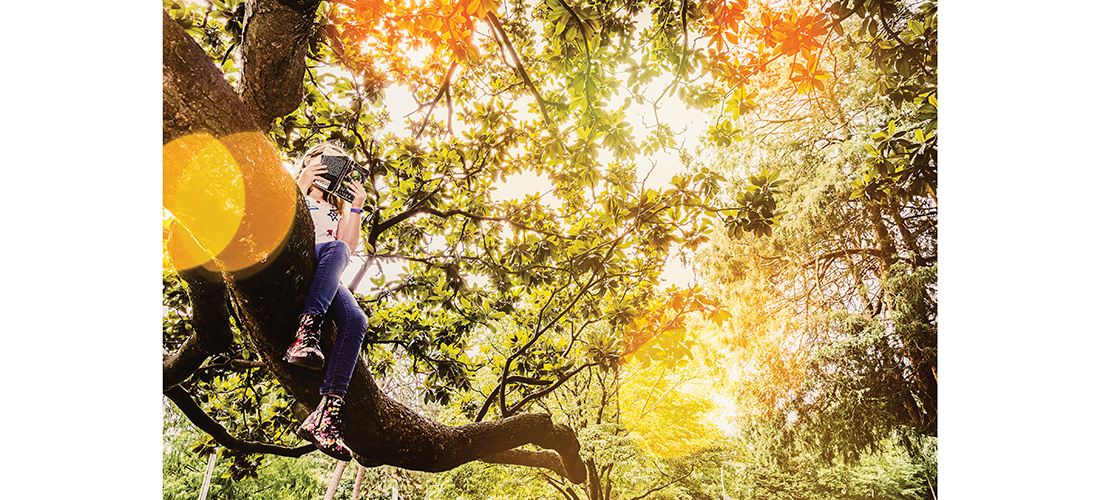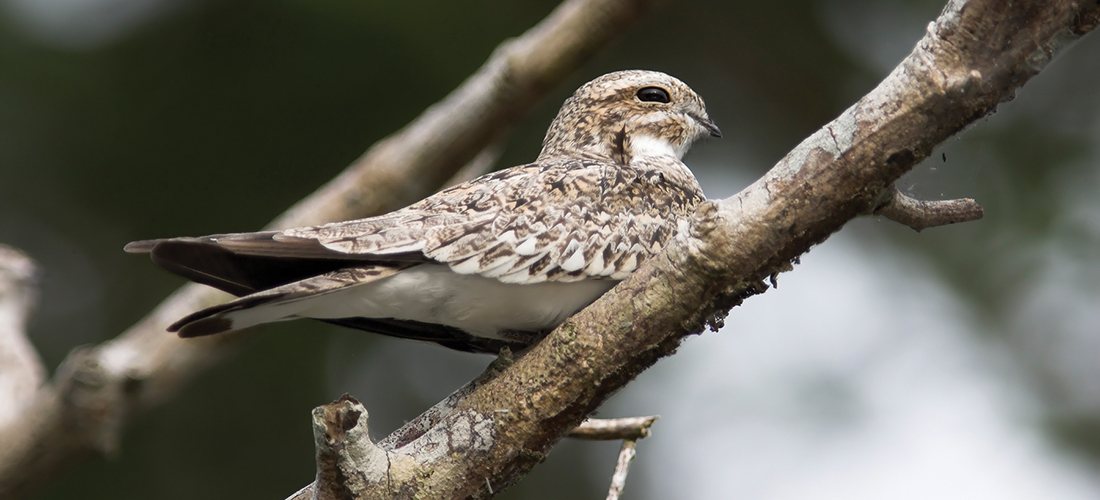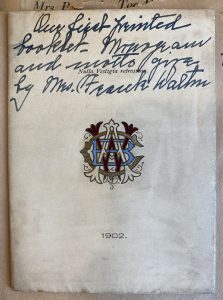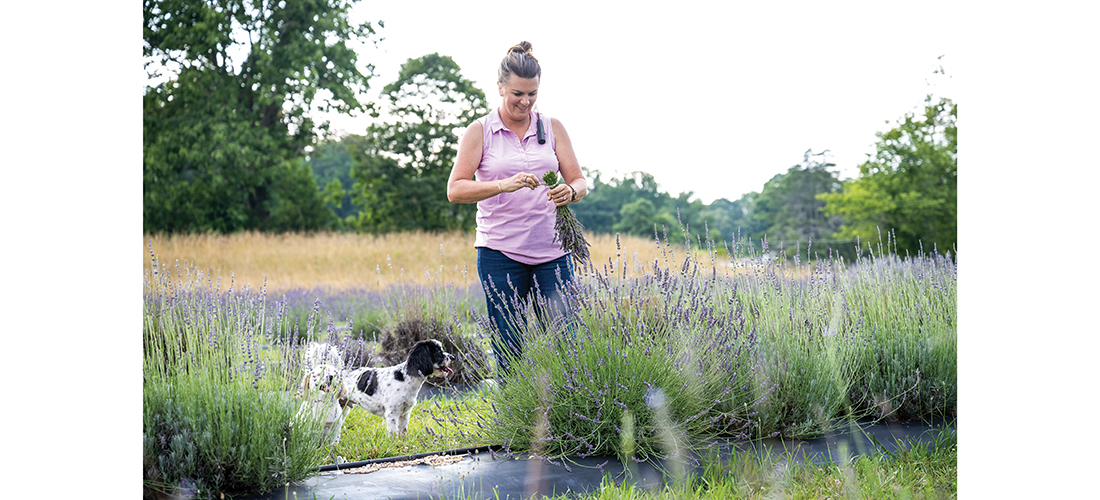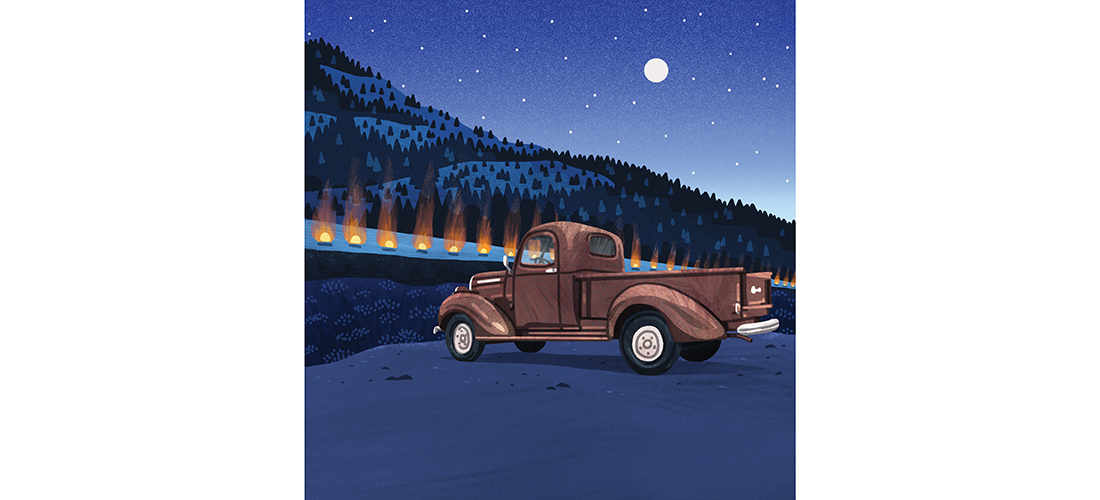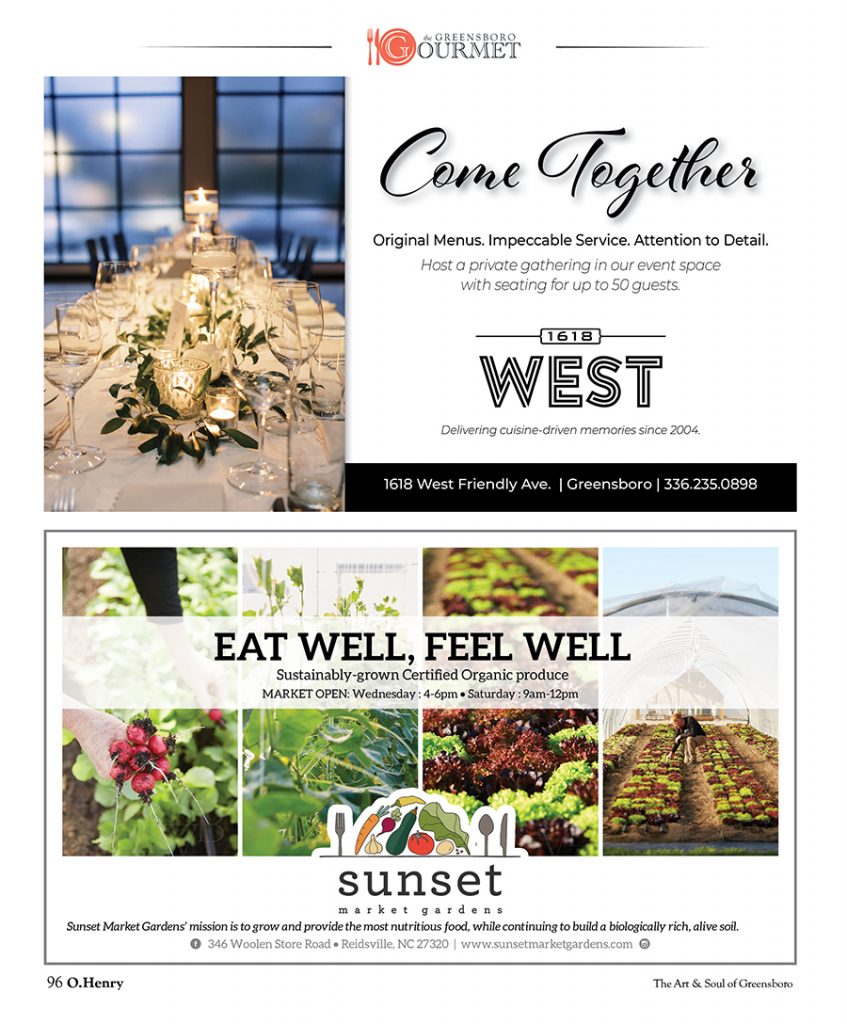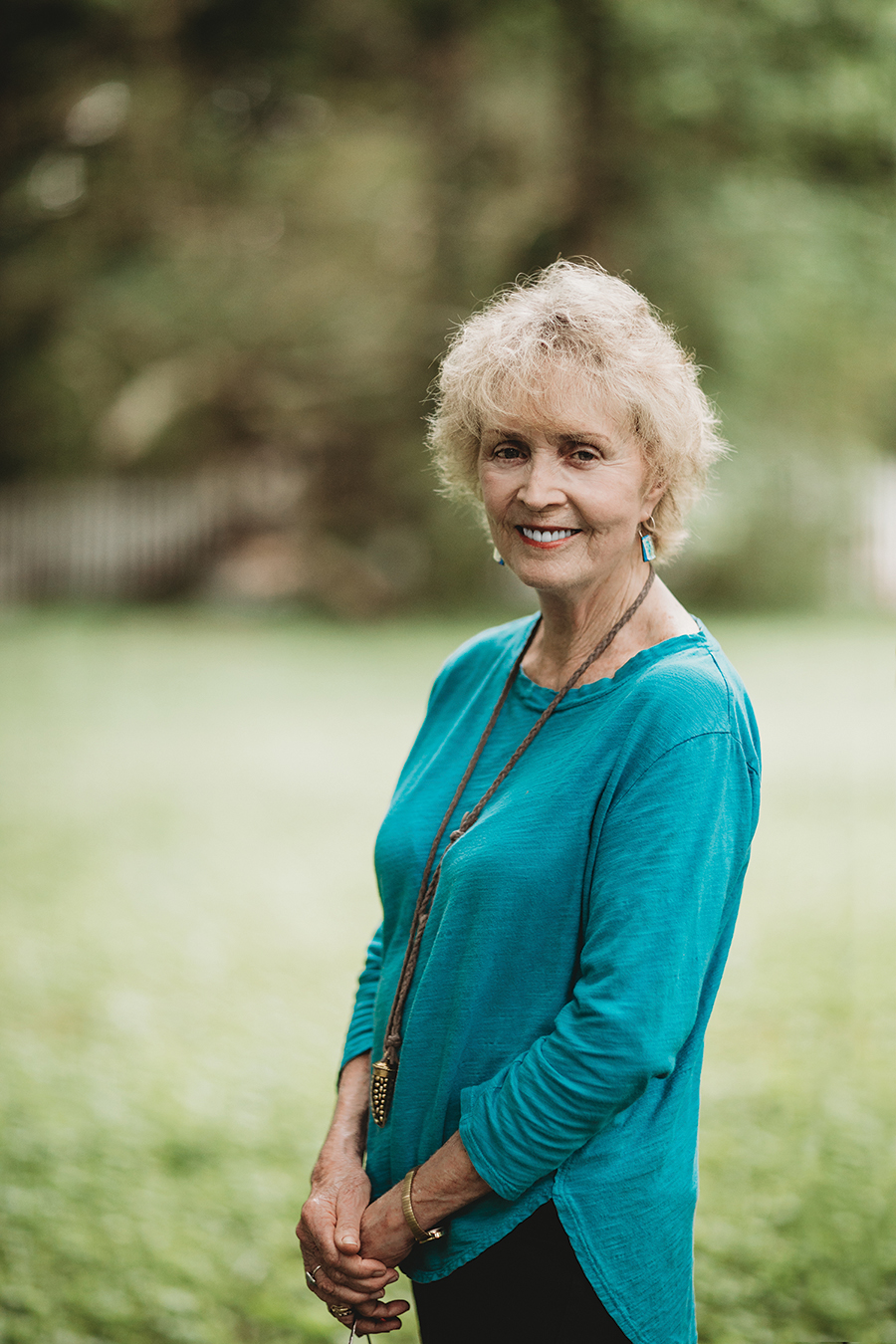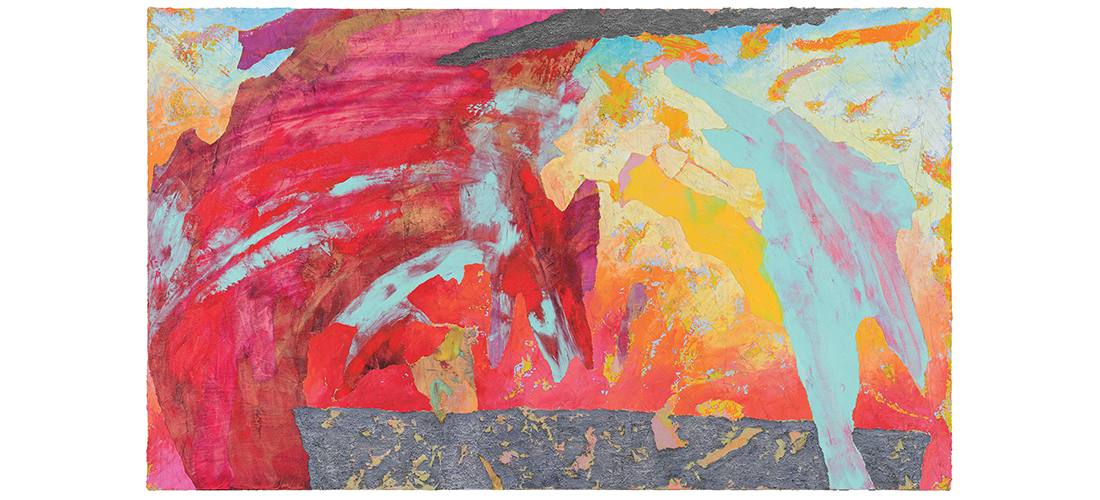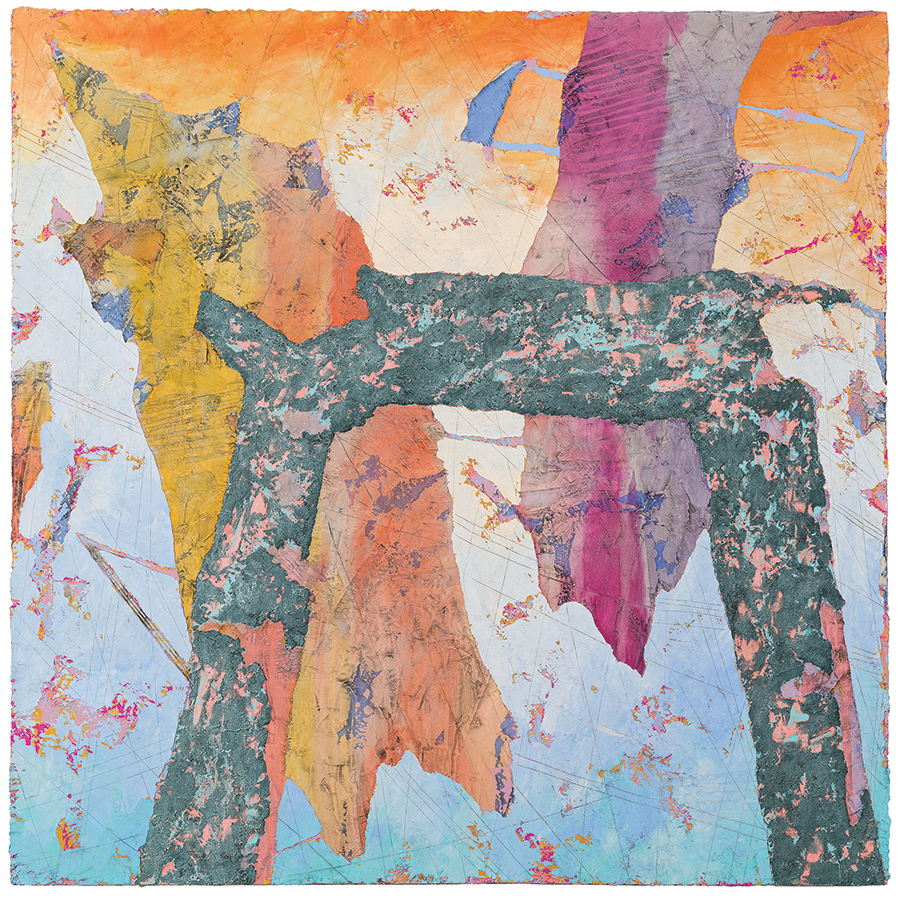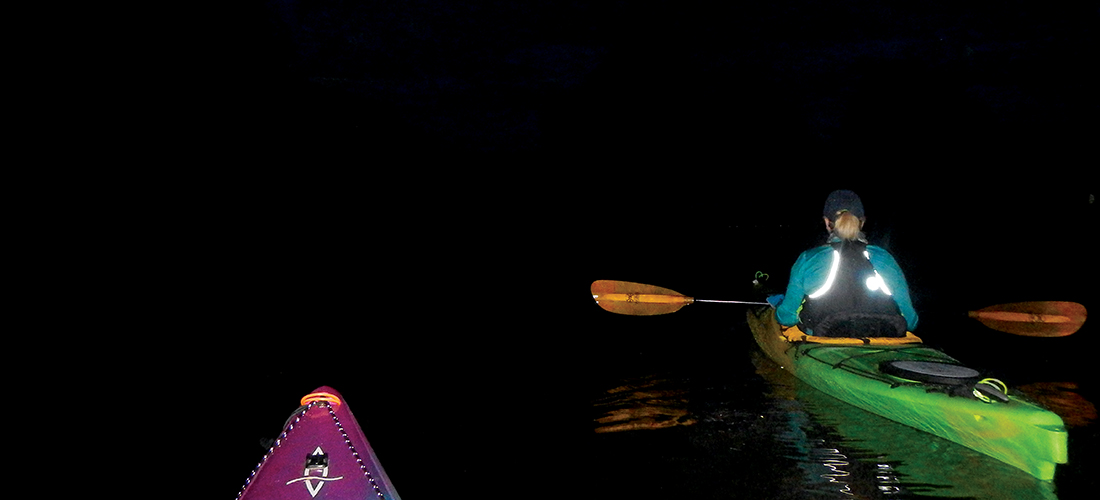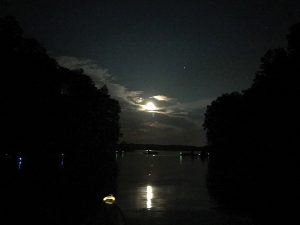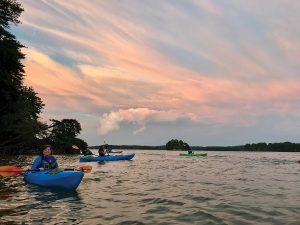Follow your nose to Red Feather Ranch
By Cynthia Adams • Photographs by Amy Freeman
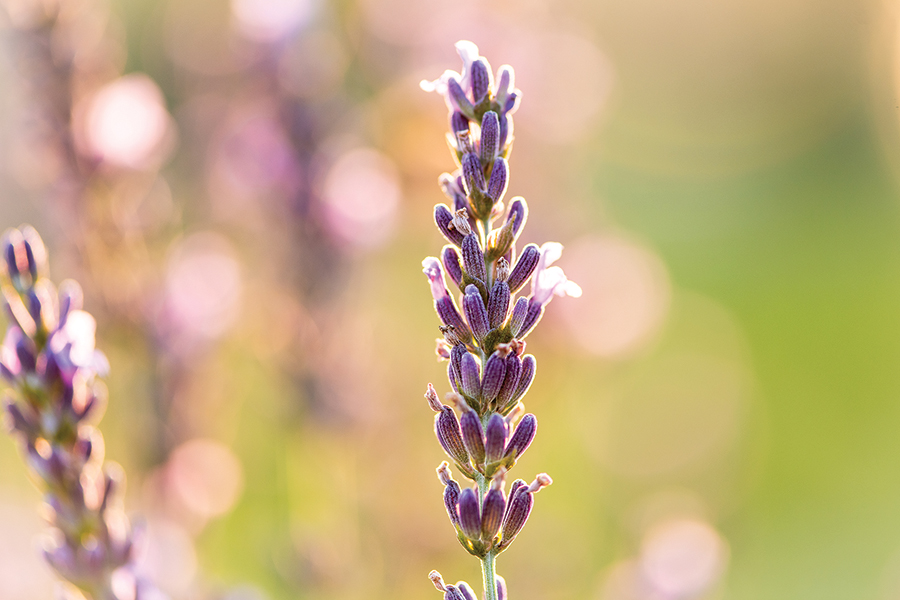

“Sweat is nearly as wonderful as the smell of lavender,” claims Dianne Reganess, who presides over Red Feather Ranch, a 24-acre property on Ritter’s Farm Road.
“I love hard work.”
Clad in hard-working clothes, T-shirts and jeans, Dianne proves the point, steering a Polaris Ranger utility vehicle — with ample space for flower buckets — inspecting orderly rows. She eyes a second planting of 400 organically-grown lavender plants in green formation. (Current number of lavender plants? Almost 1,000.)
Dianne’s blue-gray eyes approximate the colors of the Sweet Melissa Lilac, Grosso, Grosso Blue, Riverina Thomas and Provence varietals she finds best suited and most productive in her USDA Plant Hardiness Zone, 7-B.
Although she is a member of the United States Lavender Growers Association, managing a farm and cut flowers business, Dianne once wore a snappy Air Force uniform, which she eventually exchanged for business suits when later joining the financial world. At First Union Securities, where she met husband Jonathan, a financial manager, she worked as a cage operator, responsible for placing orders for stocks and the ticker tape that would print out.
“A complicated job,” she says. “I also was the cashier, documenting checks coming in and going out. Compliance manager . . . etc.”
In time, Dianne joined an estimated 40,000 women in farming and agri-businesses throughout the North Carolina Piedmont.
Growing lavender is a challenging endeavor, she says: “You have to trick it, and make it think it’s somewhere it’s not.” Jonathan helps when his work allows. But all of the maintenance and work of growing a fickle herb and an expanding variety of flowers, are her own.
Daily labors she does joyfully.
“I built every bed out there by myself. I did all the irrigation by myself. It’s hard work, but it’s very rewarding,” Dianne says.
She jumps back into the small vehicle, proudly pointing out the new “high tunnel” — grower lingo for a large commercial greenhouse.
As with all farmers, the day starts early. At 7 a.m. during growing season, Dianne has completed picking and harvesting, plus hitting the office mid-morning to deal with online orders. “By 1 p.m., most of the work is done. Flowers don’t like heat.”
With Dianne working mostly alone, apart from an occasional volunteer, the one-woman, great lavender experiment has blossomed into a visually stunning, yet all-consuming, endeavor.
And it couldn’t be more ironic, she jokes.
“I’m a terrible gardener,” Dianne confides darkly. “I cannot grow a thing for my house. But flower farming is so very different.” The mindset is different, she says, and the strategy is different.
The running joke in her family, she shares, is “do not give Dianne a houseplant. She’ll kill it.”
“So here I am, with all this going — all out there,” she says, waving toward the fields. At this point, she giggles.
Some of her family still cannot believe she created this field of lavender dreams. Her mother, an avid gardener, always knew she had it in her.
“My mom said, ‘Welcome to the other side! You’re finally recognizing what we always knew was there!’”
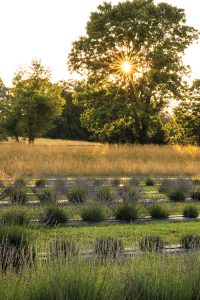

“All this” commenced in 2016, a year after Dianne and Jonathan found a long-pursued farm listed on Zillow, promptly scheduling a look-see. “And I came over the top of the hill, and I said, ‘This is it!’ I just knew, seeing the land, that pond, the house. This was it!”
Here was ample room for an outsized dream Dianne had been nursing. As for the name? Red Feather Ranch was carved in stone at the gated entrance.
“I kind of took it as a sign since my favorite bird is the cardinal. When we pulled onto the property that very first time and I saw that, I thought to myself — that’s kind of neat!” says Dianne.
The partially-wooded 24 acres included a barn, outbuildings, a spring-fed pond, creek and a white pine, custom log home at the center. Redolent of the Ponderosa on the Western Bonanza, it would have been the deal maker for many, but Dianne was equally star struck by the land itself.
“All woods. Creek. Great for our three children,” Dianne says. Her eldest, Samantha, was 19 at the time.
Daughter Mackenzie, now 15, was 9; son Alex, 17, was 11.
“I would have never thought [we would buy a] log home, though we loved a rustic look,” she says. The house would serve their needs well.
“It’s a spacious house. There were [then] five of us here. Plus, three dogs. Three cats.”
It was a farm in theory. However, six years ago, there were no fields. No commercial greenhouse either.
At the time, Samantha, now in Asheville, worked with American Conservation Experience on habitat restoration. Her knowledge concerning invasive species removal, planting and more proved a strong resource as the farm developed.
Dianne’s mother, who had relocated to the Triad from the West Coast “is an amazing gardener. Grew up in California. She can grow anything.”
But not so for Dianne, whose abilities held few hints of what was to come.
“I went into the Air Force straight out of high school. My father was in the military.”
Posted abroad for nine years, she trained as a graphic artist, creating images and visuals used in briefings for military brass. “To Generals,” she clarifies. “It was classified information. Top secret.”
Stationed near the southwest border of France, her final years were in Ramstein, Germany, near stunning fields.
“When I was in Europe, you would be driving along and pass rows and rows of lavender and sunflowers — it was the simplicity of it really that was so breathtaking. No frilly houses or structures . . . just the plants,”
Dianne left the military at age 27. Reentering civilian life, she met Jonathan while both worked at First Union Securities.
In 2003, they wed at the home of friends Andrew and Hilary Clement, a fortuitous sign given the Clements now own the Finch House, a Thomasville wedding venue. “Maybe we were practice,” jokes Dianne. (See the February 2021 issue of O. Henry magazine’s “Labor of Love.”)
They honeymooned north of Edinburgh, Scotland, “where my family originally is from,” she says. Jonathan’s family’s Swiss.
For years, Dianne flashed back to striking fields of color. She imagined herself growing sunflowers, a notion Jonathan endorsed.
Dianne eventually left the financial world, where Jonathan remained, and refocused upon their growing family and . . . growing plants. The family lived in Summerfield while seeking a small farm.
Then, the aforementioned Zillow listing appeared.
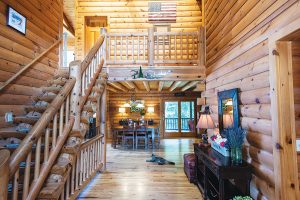
Driving over the rise the day she first approached the house, “I had a vision of sunflowers,” she says.
The expansive log home seemed perfect. It was everything the family hoped for, but Dianne was even more excited by what lay outside.
Arable land!
Early on, they tilled the front section in preparation for Dianne’s venture. “I was planning to have sunflowers.”
Then, reality. “I planted about 4,000 seeds by hand. Maybe, maybe, 50 of them grew. I was so disheartened!” The land, accustomed to growing something else, won out. The grass, she says, “completely took over my sunflowers. I have a picture of one scrawny little row.” Dianne sighs.
“I went in very green, knowing little,” she puns. That first failure caused her to “dive deep.”
“It forced me to educate myself on how to make it work. What did I need to do that I didn’t do? I was up at night studying. I love a good challenge. And I was going to make it work.”
Dianne persisted. “The second year, a little more successful. The third year, a lot more successful.”
Sunflowers were simply not quite enough. “But what else could we do?”
Dianne had more hands-in-the-dirt dreams.
Jonathan followed his bliss, too, leaving his corporate job and starting a wealth management business last April.
She pondered the next agro steps. With some prodding from Jonathan, she realized lavender was the right complement.
“Of course,” Dianne laughs. “I had talked about sunflowers and lavenders in France.”
Here, too, was another learning curve. Rather than plunging in without exploring risks, she did research. “Time. Money. How realistic? Is it going to grow in this area?” Growing conditions in the Triad’s microclimate, 7-B, are tricky. The air is more turbulent; therefore, storms are more violent.
In 2016, she took an entire year off to figure out the best supplier and grower before Red Feather Ranch launched as a commercial grower.
Suppliers are crucial.
“A lot of varietals are patented,” she explains. This prevents commercial growers from propagating their own plants.
She attended a lavender grower’s conference in Charleston, S.C., to better educate herself. “I was asking questions. Took notes and listened. I came back thinking, ‘We can do it. But it’s going to take a lot of work.’ Because lavender is a very tricky plant. In the French Provence area where it grows well, they get 14 inches of rain a year. We get 44 plus.”
How not to drown lavender?
She learned the answer. “You have to have it raised. Drainage is key.”
Dianne experimented with a mix of dirt and pea gravel, having met a Virginia grower who only used pea gravel and no dirt. Then she grew braver. “I last planted them only in pea gravel.”
Paydirt! She finally “figured out the drainage thing.”
“The more you neglect it the better it is. The plant life of lavender is about 15 years. Get them out of a pot,” she advises, and give them room. “At full maturity it can get about five feet from side to side!”
Dianne learned what growing practices “are good for lavender.” As a cool weather plant, she knows to set stock in October.
Lavender varietals differed by camphor content, Dianne explains.
“Lavender has the compound in it that is called camphor,” she adds. “That camphor chemical makes you kind of go oof . . . it’s really in your face. The other lilac plants that they use for culinary have a much lower chemical compound.”
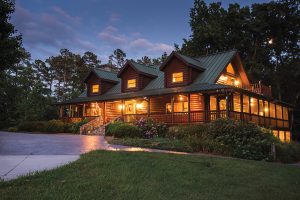
Sweet Melissa Lilac and Provence lavenders are for culinary use. For infusions, teas and baking, she employs these, even adding a teaspoon of lavender buds into muffin batter or beverages. “I make lavender lemonade and cocktails! I’m old school.”
It’s savory, too. Whenever cooks use herbs de Provence, “there’s lavender in there,” she points out.
Sunset is her favorite time. She and Jonathan can enjoy bird-watching. Or take in bumblebees, drunk from the soporific lavender, nodding off on the stalks. Felines, too. The family cat, Chanel, curled up to nap inside a lavender wreath as Dianne was crafting it.
She still loves sunflowers, where the goldfinches feast away on the drooping heads.
And the butterflies! They thrill Dianne. “I don’t spray,” she says, adding, “lady bugs eat the aphids on my sweet peas.”
There is something beyond what nurtures plants. There are benefits for humans, too.
In fact, she wishes more people would come out, breathe the intoxicating and relaxing smell of lavender, and enjoy the rejuvenating air, while walking the picturesque farm.
“People can come here. People need to get back out in nature. Take off your mask and breathe some fresh air! Walk the rows even if you don’t buy anything.”
Sometimes people come solely for photo opportunities, she says. Dianne is a shutterbug, who enjoys snapping pictures of each unfolding season, posting online at https://www.redfeatherranch.shop/blog.
After lavender peaks, other blooms follow, including, of course, sunflowers, a perennial favorite. Sunflowers have a longer season, growing thru October.
Red Feather Ranch offers subscription options, a community supported agriculture program, and cut-flower delivery throughout Greensboro. The farm sells lavender through mid-July, and sunflowers June–October, adding a new program called U- Pick.
After the growing season ends, Dianne harvests the dried lavender and stitches up sachets and other projects for both home and kitchen.
She makes linen spray, body mist, lip balm, sugar scrub — all from organic, dried lavender.
Farming is relentless, as anyone who ever wielded a hoe knows. It’s an all-the-time lifestyle choice, but it happens to agree with Dianne, who determinedly battles weather and wildlife.
“All is well here… hot, hot, hot, but well,” the exasperated farmer writes in June. “Deer ate ALL my sunflowers. Makes me so mad!”
Still, the work seems to dial the clock back. Dianne swears it rejuvenates her. An unhurried manner and easy laugh underlie this. All of which — especially a lack of vanity — proves her point.
Sweat of the brow is a point of pride.
A feather in her cap.
Cynthia Adams is a contributing editor to O.Henry magazine.

Fast Facts about Lavender from Dianne Reganess:
Fact: Zone 7-B is a microclimate. “What works in Raleigh won’t necessarily work here. We’re in a zone where the air can be more turbulent. It is definitely humid. Severe storms.” (https://planthardiness.ars.usda.gov/)
Fact: It’s illegal to propagate lavender varietals, which are patented, without a license. It took Dianne a year to find the right commercial grower. Like roses, many lavender varietals are patented. “I cannot take a clipping and grow my own plants without breaking the law. So, I go back to the same woman grower. I know the plants I get from her. They are healthy and survive, and this is key.”
Fact: “It takes the lavender plants three years to reach maturity.”
Fact: “Lavender is organic. No chemicals are needed. Also, deer and rabbit don’t bother it.” Also, she warns against potting soils or bark mulch, which hold excess moisture, causing disease.
Fact: Dianne recommends Munstead, Provence and Sweet Melissa, lavenders more commonly found at “big box” stores. OH

